Who would have thought that a seemingly innocuous decision to play a different deck than my teammates in an SCG Open event would have such a large impact
on the Pro Tour?
I blame Gerry Thompson.
While I was ultimately uncomfortable with the idea of playing the Abzan Aggro deck way back at #SCGINDY as a result of inexperience with sequencing the
mana, it didn’t take much from Gerald to push me into playing the G/W Megamorph deck I had been tossing around online when he expressed his desire for our
team to diversify their testing.
Even after the tournament, despite having a great showing, I thought my second place finish was innocent enough. G/W Megamorph was now a known quantity for
the Pro Tour and would likely be a part of everyone’s gauntlet but nothing more.
Then #SCGATL happened.
This Pro Tour was incredibly strange as the format rapidly evolved in two short weeks from “let’s push our mana to do whatever we want” to there being
three clear decks to beat in Jeskai Black, G/W Megamorph, and Atarka Red.
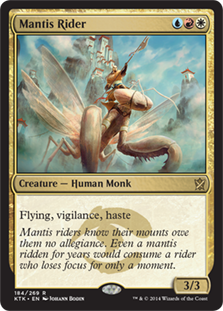
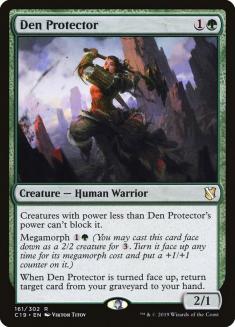
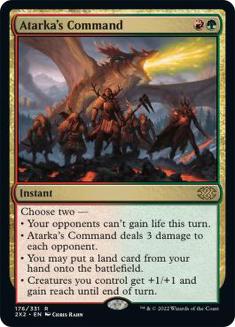
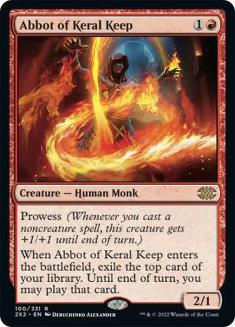
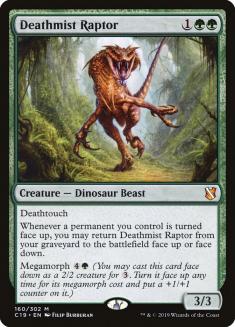
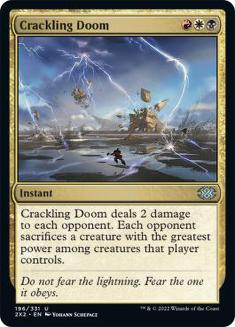
When Team BMK Gaming arrived in their Cabin in the Woods outside of Madison on Sunday night following both the Grand Prix and the final match of the SCG
Open, we sat down to delegate lines of attack for members to both build these stock decks and to explore new avenues.
By Monday night, something strange had occurred: we were done brewing. It was my intention to devote a full day to trying to make Sphinx’s Tutelage work.
My theory was to utilize Silkwrap as a means to insulate the enchantment from Dromoka’s Command, and with the reduction in power within the format, I
thought the deck would be well-positioned.
Well, I was wrong. The format had only gotten faster and more explosive. Gideon, Ally of Zendikar proved to be too powerful and resilient of a threat for
Tutelage to handle. While I originally played Alhammeret’s Archive and Pyromancer’s Goggles, these five-drops were no longer playable in a format where a
room away my teammates were cackling as they killed each other on turn 4 with their R/G Landfall deck.
A Pro Tour or two ago, I feel as if I would have been incredibly distraught that night. A great deal of my enjoyment of Magic comes from brewing and
exploring new ideas. While that certainly hasn’t changed, I think my attitude towards Pro Tours and other important events has. I want to win, and to do
that I need to make the best decisions I can when facing a crossroad.
In the past I’ve never been too stubborn to blindly play my own un-tuned deck in the face of a much better choice in a major event. However, the decision
to keep playing brews that I didn’t have the time or numerical support to fix instead of spending my time playing and getting reps with the deck I’d
ultimately end up registering was a gigantic mistake. Thankfully, I still had G/W Megamorph and set out early to tune it the best I could with seemingly no
better options for me appearing.
Before we left Madison, Jeskai Black was on everyone’s brains. The combination of Jace, Vryn’s Prodigy, Mantis Rider, Ojutai’s Command, and Soulfire Grand
Master gives the deck a potent early and late plan of attack. Further, the ability to move into black for Crackling Doom elegantly handled the deck’s
classic issues with large creatures like Siege Rhino. Unfortunately, while we never were able to tune the deck as well as where The Pantheon’s version
ultimately ended up at, we did learn quickly that stock G/W Megamorph was not beating Jeskai a percentage of the time that was acceptable.
The major reason for this is Mantis Rider. More specifically, G/W Megamorph has a gaping hole in it, and that hole is flying creatures. It wouldn’t be
difficult for everyone to figure this out on their own and as a result I suspected that we would be playing against a lot more Thunderbreak Regents in
Milwaukee.
Strangely, in almost every single matchup present in the format, G/W Megamorph has inevitability. Even against most control decks, the combination of
Hangarback Walker, Den Protector, and Deathmist Raptor proved to be too much to handle for the majority of archetypes to go toe-to-toe with. As a result,
the proper way for these Jeskai and Dragon decks to operate in the matchup is as a glorified Delver deck. G/W Megamorph is not entirely comfortable with
the concept of being forced to race back against Thunderbreak Regents and Draconic Roars. If the various flavors of red decks are able to trade damage
liberally, they can typically squeak across the finish line with a few well-timed removal spells.
What I quickly discovered is that I would basically take any liberties when playing against Jeskai or Mardu to avoid taking any damage from their more
anemic two-drops. (Seeker of the Way, Soulfire Grand Master, etc.). While there are plenty of high-power shenanigans going on throughout the format,
especially when involving the card Become Immense, there is very little actual burn.
All of these reasons encouraged me at one point to even try a version of Megamorph that played Evolutionary Leap in the maindeck. The major purpose of this
was simply to have the ability to crack open my Hangarback Walker at will. I felt (and this is certainly true in the Mardu Dragons matchups and
sideboarding) that if I could just accumulate some flying blockers to prolong the game, basically no deck could ever beat me in anything resembling a fair
contest.
This is basically an incredibly long winded way of getting to the point that G/W Megamorph benefits greatly from having creatures that are capable of both
playing offense and defense effectively. Avatar of the Resolute was my major change to the maindeck going into Pro Tour Battle for Zendikar, and it
accomplishes this role admirably while shoring up a major weakness to flying creatures.
Now that I had one check mark on my list, my attention was turned towards beating the mirror match and gaining percentage points against Atarka Red.
Atarka Red was tricky. As our R/G Landfall deck developed within the house over the week, we certainly weren’t brash enough to assume that only we figured
it out. Naturally, there was a strong uptick in the number of Surge of Righteousness being played over the traditionally staple Arashin Cleric at SCG
Atlanta. As a result, we expected folks to adopt to this and move towards Snapping Gnarlid, Scythe Leopard, and Den Protector as a means to naturally adapt
to most deck’s sideboard configurations.
I don’t actually think G/W Megamorph’s matchup against Atarka Red is terrible, and it is certainly better than against R/G Landfall. Surge of Righteousness
is great, and what I discovered is that because Atarka Red’s average draw step is so weak and their burn so lackluster, that the majority of games, it’s
correct to never attack until you have lethal damage. In particular, if you are able to sneak a Gideon, Ally of Zendikar onto the battlefield without
dying, simply making a Knight Ally every turn until you build up a suitable force or have stockpiled sufficient interaction to defend against a combo-kill
is a legitimate strategy.
R/G Landfall is much more difficult, particularly when packing Den Protector, as their creatures hit harder and they can combo-kill from a much lower base.
This led to the discovery of Winds of Qal Sisma (affectionately known as Winds of Simba since it took me way too long to find out the card’s real name).
While it is true that Wild Slash is capable of countering Winds, we felt the card was impactful enough and was capable of stealing games by either just
blanking their combo potential or allowing G/W Megamorph to effectively race back, which is typically something that is difficult to do in the matchup.
The mirror is odd, and I’m not even entirely sure we got it right. There are a few basic phases to most games of G/W Megamorph mirrors.
Assuming that both players are playing a game of Magic, the first is the Gideon phase. Gideon is an incredibly swingy card dependent on whether the person
casting it has sufficient board position to defend it. While not particularly effective when behind on board, Gideon is absolutely devastating when the
caster is ahead and is basically capable of ending the game in two or three turns.
This would naturally insinuate that whomever is on the play with a turn 4 Gideon is a favorite assuming they played anything before the planeswalker, and
this is true. However, there are circumstances where Dromoka’s Command is capable of breaking serve on the draw by removing an opposing blocker and forcing
through extra damage, ideally on a freshly four power Deathmist Raptor. In a similar vein, Avatar of the Resolute also proved to be a great tool in the
mirror for breaking serve on the draw due to its ability to reach the critical power and toughness of 4/3 that can trample over a Knight Ally token. This
change also incidentally improved our mirror-match rate.
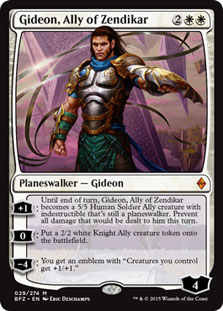
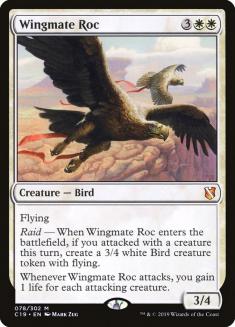
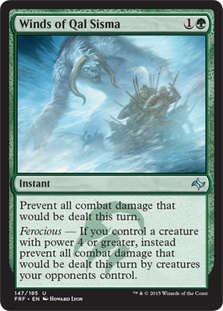
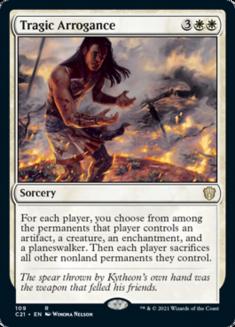
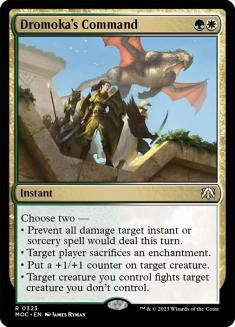
Another way to obtain Gideon advantage is strategic use of Hangarback Walker. While it is typically quite difficult to keep your Gideon alive if you are on
the draw against an opposing Gideon, what can be done is to use Dromoka’s Command (or if your opponent gets too feisty, simply block) to pop your
Hangarback Walker for two or three tokens, then immediately use your Gideon to make an emblem and assassinate their planeswalker, leaving you at a massive
advantage for the rest of the game. When there was some information that players might be boarding out Hangarback Walker in the mirrors at #SCGATL, I was
overjoyed as this play pattern proved to be so effective.
The next phase of the game is surviving Wingmate Roc. Again, especially on the draw, this is incredibly difficult to do. If you are already on the “Gideon
back foot,” it’s basically impossible to recover and this is why the mirror can be frustrating at times. If both players don’t get tempo’d out, then the
first game will likely come down to whoever can flip the first Nissa.
What may come as a surprise is that, especially pre-sideboard, the matches are almost never as grindy as one would suspect. Rather, the games are more
about trying to position one’s self to fight against these three major threats or to present them first while simultaneously mitigating your opponent’s.
Naturally, not getting destroyed by Dromoka’s Command is also a major factor present throughout the game.
After sideboard, I wasn’t interested in playing any kind of crap shoot; I wanted to be solely reliant on Tragic Arrogance as a major trump while doing my
best to make sure my opponent would never be in a great position to Arrogance me back. It got to the point in testing where I actively wanted my opponent
to Wingmate Roc me in the mirror after sideboard as it often presented such a great opportunity to use my Tragic Arrogance to remove all of their relevant
creatures and clear an attack on their Gideon, Ally of Zendikar, or Nissa, Sage Animist.
The only games I wanted to play were ones in which I survived the initial fight over Gideon and then dominated the Nissa race with Arrogance. I no longer
wanted Wingmate Roc after sideboard.
Largely influenced by the above information, this is the final decklist I chose to play at the Pro Tour:
Creatures (23)
- 2 Wingmate Roc
- 3 Warden of the First Tree
- 4 Den Protector
- 3 Deathmist Raptor
- 4 Avatar of the Resolute
- 3 Nissa, Vastwood Seer
- 4 Hangarback Walker
Planeswalkers (4)
Lands (15)
Spells (18)

My feelings towards my end results at this Pro Tour are odd. I’m certainly not unhappy with my finish, as 10-6 is good enough for money and some critical
Pro Points while also breaking a fairly long present streak of non-cashes, which I’m pleased to eradicate. Further, I also started the second day at 4-4
and did not lose in the second phase of Constructed. However, I did start the tournament with a 1-4 record in Constructed, which would probably make people
believe that I’m not happy with my deck or deck choice as 6-4 is ultimately nothing to write home about.
That really couldn’t be farther from the truth though. I was incredibly pleased with what I learned about my matchups and my general process of attempting
to solve the deck’s issues, most of which I believe that I did address within reason. I don’t particularly like to complain or dwell on bad luck, but I had
my share of misfortune throughout the first Constructed leg, and the only thing I’m really unhappy about regarding that now is how frustrated I let myself
get. It’s fair to say that I may not have given myself the best chance to win all of those games despite lackluster draws. Of course, there are always
things to improve upon and not just technical play.
Some potentially small tweaks aside, I would play the same deck again if I had to do the Pro Tour over again. While Pro Tour testing is always about
striving to improve upon an imperfect process, the fact that I can say that with confidence is an incredibly satisfying way to reflect upon this trip and
look forward to the future.
